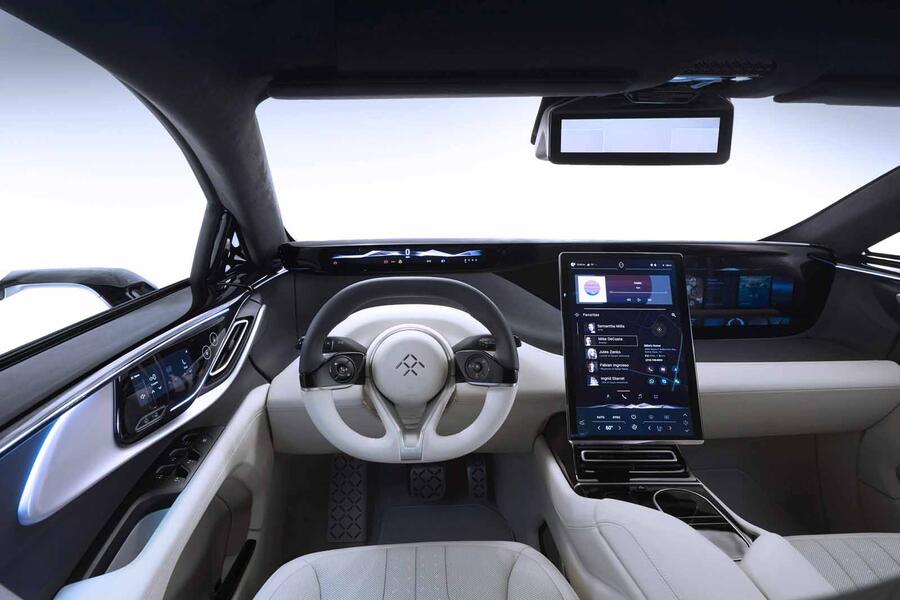Considering the FF91’s positioning as a smartphone on wheels of sorts, its target audience is more likely to care about the touchscreen’s size and resolution than the powertrain’s output. The software is Android-based, like Volvo and Polestar’s infotainment systems, but the interface is brand-specific, and a big part of the Faraday Future experience.
Owners will create a profile called an FFID that will store their climate control, entertainment, and navigation preferences, and automatically set them when camera-based facial recognition technology detects who is in the driver’s seat. The passengers’ preferences will also be stored and automatically set, with the obvious trade-off being that your car might end up knowing a lot more about you than some of the people you interact with daily.

Ultimately, what stands out the most while driving the FF91 is that it’s more concept car-like than any vehicle currently available. Stylists carved out the parts of the dashboard that aren’t needed, relocated the digital instrument cluster closer to the base of the windshield, and installed a thick-rimmed oval steering wheel to create a sense of openness that’s surprising even considering the car’s relatively big footprint. Breitfeld’s claim that space is in Faraday Future’s DNA rings true. It’s a sign the company figured out what it stands for, what’s achievable, what’s important, and significantly, what’s not.
As of writing, Faraday Future is waiting for its final round of funding. Once it’s secured, it will begin building the FF91 in a factory located in Hanford, California, before the end of 2020.
The first examples will be sold on the American market, but the firm will quickly start deliveries in China, where it has amassed a growing pile of reservations, and where its second production facility will be located. It identified America and China as its key markets; Europe isn’t on its radar for the time being.
“We have no concrete plans to bring [the FF91] to Europe for now. We see the markets in Europe are not really prepared for electric and connected cars. There are some people who are interested in this, but if you look at the market potential, the number one is clearly China,” Breitfeld said. Norwegians love electric cars, he pointed out, but Norway remains a relatively tiny market.
Pricing will range between $120,000 and upwards of $200,000 (about £91,000 and £152,000, respectively), which places the FF91 against formidable opponents from big names, and Faraday Future is already looking forward to expanding its range with a pair of smaller models named FF81 and FF71, respectively.